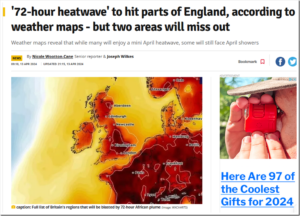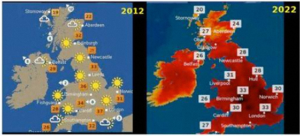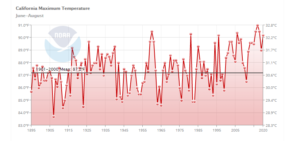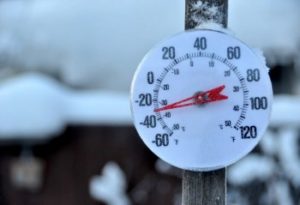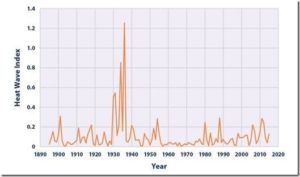by L. Lueken, Apr 19, 2024 in ClimateChangeDispatch
Multiple media outlets, including the BBC and Reuters, claim that a recent West African heatwave would be “impossible” without global warming. This claim is misleading and not supported by real-world data. [emphasis, links added]
The study cited in both articles is merely an attribution modeling study, which is not proof of the influence of climate change.
In their article on a recent heatwave in West Africa and the Sahel, Reuters reports“[t]emperatures soared so high in Mali and Burkina Faso they equated to a once in 200-year event, according to the report on the Sahel region by World Weather Attribution (WWA).”
Reuters continues: “The severity of the heatwave led WWA’s team of climate scientists to conduct a rapid analysis, which concluded the temperatures would not have been reached if industry had not warmed the planet by burning fossil fuels and other activities.”
One of World Weather Attribution’s statisticians even went so far as to say that heatwaves of that intensity wouldn’t happen at all in the region in a “preindustrial climate.”
This claim is utterly unfounded, as those parts of Africa are known for being at least semi-arid, subtropical, and prone to drought and heatwaves.
While temperature records are not very lengthy or complete for many parts of Africa, April is known to be the hottest month of the year for Burkina Faso in particular, and many parts of the Sahel region in general, where temperature maximums on average are above 40°C – which is what the recent heatwave brought, meaning there is no justification for claiming the recent heatwave is historically unprecedented.
Climate Realism has frequently noted that WWA’s “rapid attribution” studies are more in the realm of fantasy than fact, as they depend on virtual models of climate conditions that do not actually exist in real life.
The model of the climate that an event like the recent Sahel heatwave is compared to represents how scientists guess things would have been had it not been for the burning of fossil fuels.


